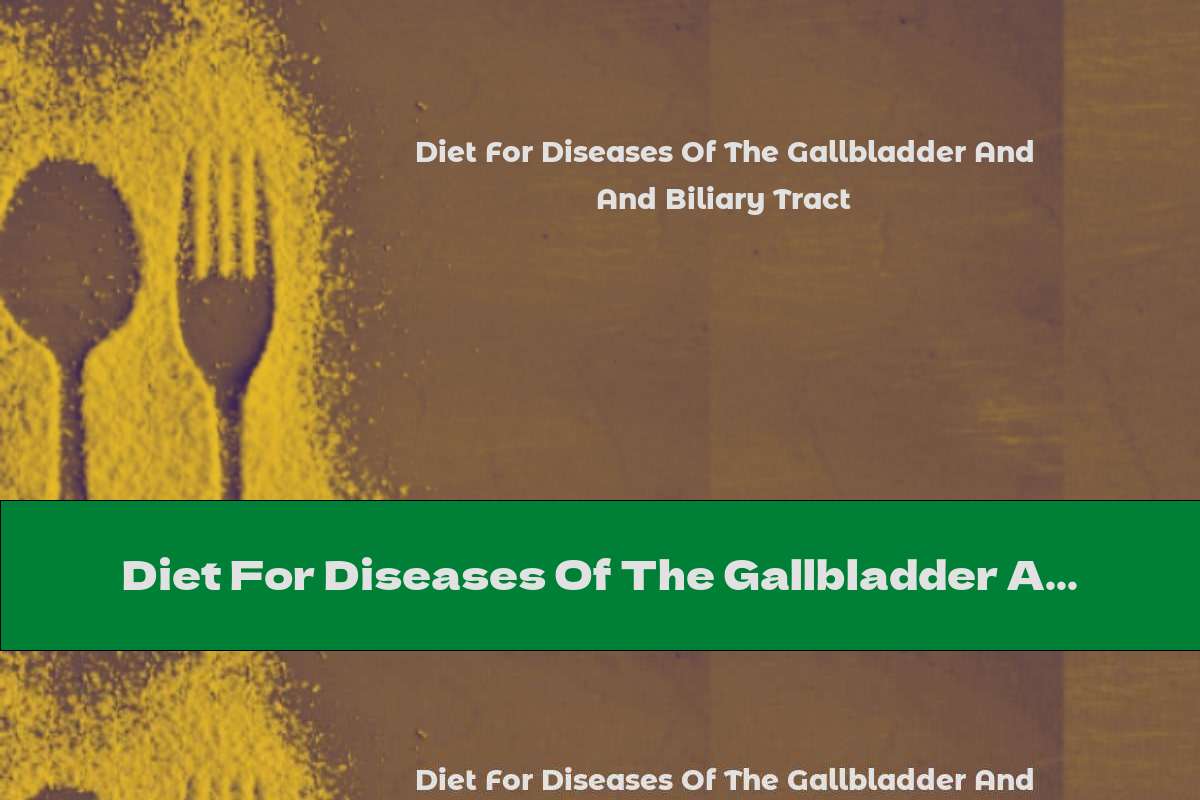Diet For Diseases Of The Gallbladder And Biliary Tract
 Author: Ivan Red Jr.
Time for reading: ~4
minutes
Last Updated:
November 27, 2022
Author: Ivan Red Jr.
Time for reading: ~4
minutes
Last Updated:
November 27, 2022

Unhealthy food, a sedentary lifestyle, neglecting the advice of nutritionists are increasingly creating problems for our gallbladder. How to avoid this?
Unhealthy food, a sedentary lifestyle, neglecting the advice of nutritionists are increasingly creating problems for our gallbladder. How to avoid this?
Bile is necessary for the body to process food, which varies in quality and quantity. We regularly overload the body with fatty, spicy, fried food, with a large amount of cholesterol, thereby forcing the reserve of bile to work in the wrong rhythm for it. The most common disease of the gallbladder is cholecystitis. Cholecystitis is divided into acute and chronic, with the formation of stones (calculous) or without the formation of stones (acalculous).
The gallbladder consists of muscle tissue. This tissue has a contractile function and with its help the walls of the bladder shrink, which ensures the movement of bile. When the mobility of the biliary tract is disturbed in the body, dyskinesia occurs. Dyskinesia is a phenomenon of motility disorders of the gallbladder and biliary tract, which leads to stagnation of bile, impaired bile formation and bile secretion. The main symptom is pain in the right hypochondrium of a regular and irregular nature, loss of appetite, bitterness in the mouth, in rare cases, vomiting of bile in the morning.
Dyskinesia can lead to gallstone disease. Gallstone disease consists in the formation of stones in the gallbladder and ducts. Stones of small sizes can easily move into the duodenum and come out. In other cases, stones can block the bile ducts and lead to inflammation of the gallbladder (acute cholecystitis).
With a slow course of the disease, cholecystitis is called chronic. Chronic cholecystitis is divided into two types: (1) cholecystitis develops slowly, without pronounced symptoms for several months or years, (2) cholecystitis formed after an acute cholecystitis. These diseases are diagnosed using ultrasound. During the examination, the presence of stones in the gallbladder, signs of inflammation are also revealed.
A diet is recommended for the treatment of the disease in combination with drug treatment. The diet depends on the complexity and degree of the disease. Metabolic processes of the body are directly related to the liver, so the diet for gall bladder diseases is aimed at reducing the load on the liver as well.
A gentle diet is used for chronic cholecystitis. Food should be consumed often and in small amounts, approximately 300 grams. It is recommended to eat food that contains proteins and also contains a moderate amount of fats of vegetable origin. This is butter and vegetable oil, but animal fats are completely contraindicated. Foods rich in carbohydrates are especially contraindicated, they contribute to stagnation of bile and complicate its outflow.
1st breakfast: cottage cheese, oatmeal with vegetable oil, weak tea.
2nd breakfast: fresh apples, vegetables.
Lunch: vegetable soup with vegetable oil, boiled meat (chicken, beef) or fish, stewed carrots, decoction of dried fruits or jelly.
Noon: rosehip broth, vegetables, fruits.
Dinner: boiled fish, buckwheat porridge or boiled potatoes, tea.
It is recommended to use kefir at night.
The menu should not contain products containing essential oil and extractive substances. These include meat, fish, mushroom soups, pepper, horseradish, radish, radish, sorrel, smoked meats, pickles, mushrooms, cold dishes and drinks (ice cream, soda). Products that contain rough fiber - rye bread, legumes, nuts. Chocolates, cocoa, coffee, sweet flour products are not recommended.
In turn, it is very important to include choleretic products in the diet. Such as milk, sour cream, hard-boiled eggs, cabbage, fruits, cucumbers, carrots, beets, strawberries.
An important place in the treatment of gall bladder and biliary tract dyskinesia is occupied by decoctions of choleretic herbs - immortelle, corn stigma, tansy, St. John's wort. It should be taken during the period of exacerbation within a month.
A decoction of St. John's wort, tansy, immortelle should be taken two or three times a day 15-20 minutes before meals for 1/2 or 2/3 of a glass. Corn stigmas should be consumed three times a day 15 minutes before meals, one tablespoon at a time. It should be noted that it is undesirable to use St. John's wort if you are prone to constipation.
Mineral water treatment courses are very useful. Water should be taken two or three times a day 20 minutes before meals for a month. It is desirable to repeat the course of admission two or three times a year.
It is recommended to follow the diet for at least 6 months, only then it will be quite effective.
After removing the gallbladder, a strict diet is prescribed. It prohibits the use of all fats of vegetable and animal origin. It is advisable to almost completely exclude meat dishes from the diet. When it is difficult for a person to completely give up meat, experts allow the consumption of low-fat boiled chicken or beef in small quantities, various varieties of boiled low-fat fish.
It is especially important to drink a lot of liquid, up to three liters per day. This also includes diluted juices, weak green and black tea. Buckwheat and oatmeal, low-fat cheese, kefir are very useful. You can use wheat bread, vermicelli, pasta.
Adherence to a properly selected specialized diet is an essential factor in the fight against gall bladder diseases.
Related Articles
- The Ketogenic Diet: A Comprehensive Guide to Keto Nutrition
- The Mediterranean Diet: A Nutritional Powerhouse - Benefits, Meal Plans, and Tips
- Unlocking the Power of Diet № 13: A Comprehensive Guide to Nutrition
- Unlocking the Power of Diet № 13: A Comprehensive Guide to Nutrition
- The Ultimate Guide to Diet???14: Benefits, Components, and Tips